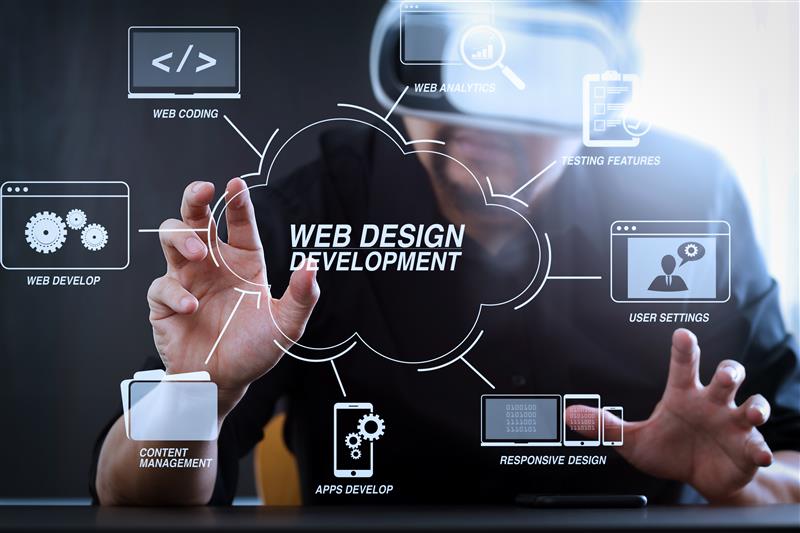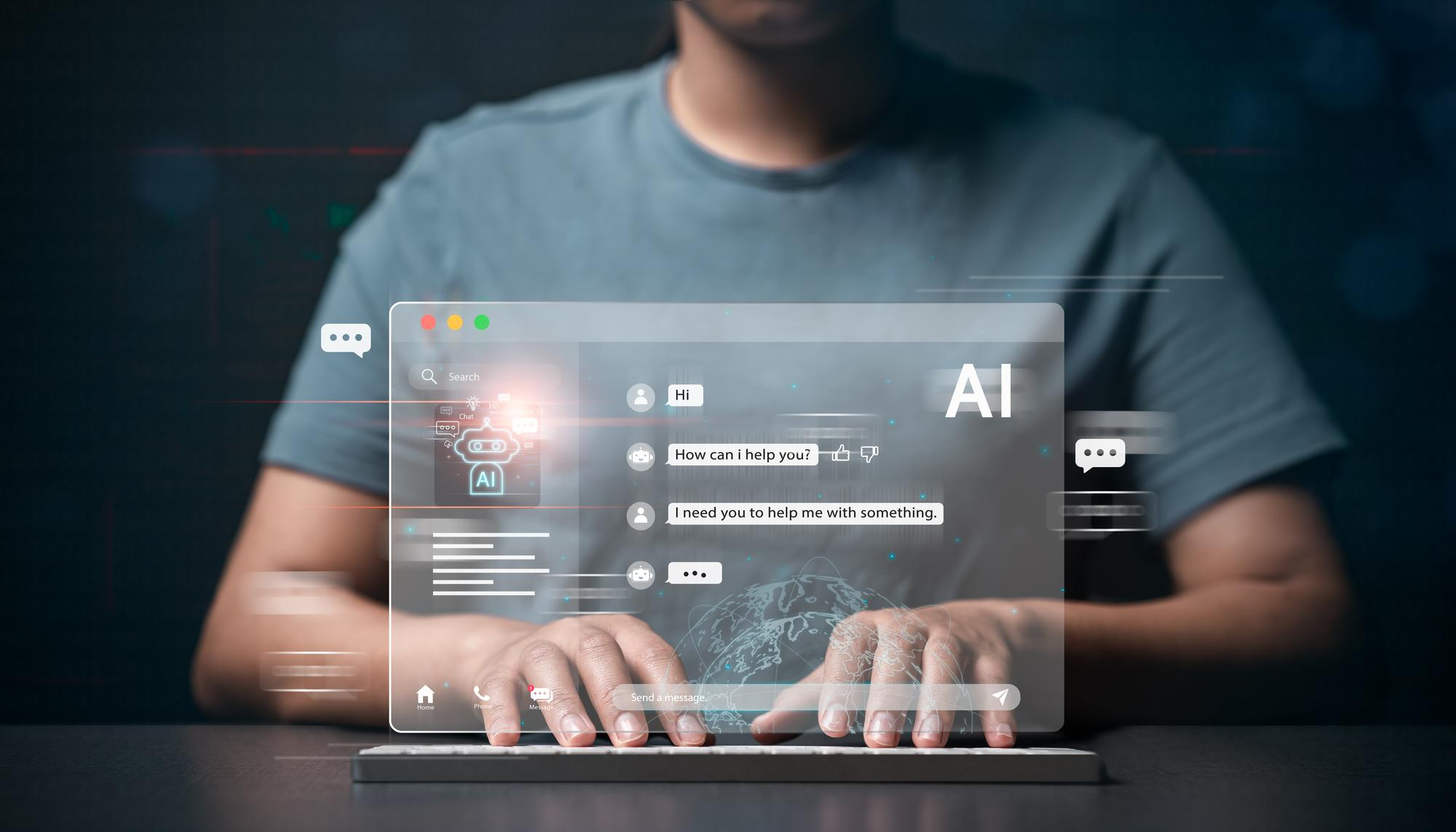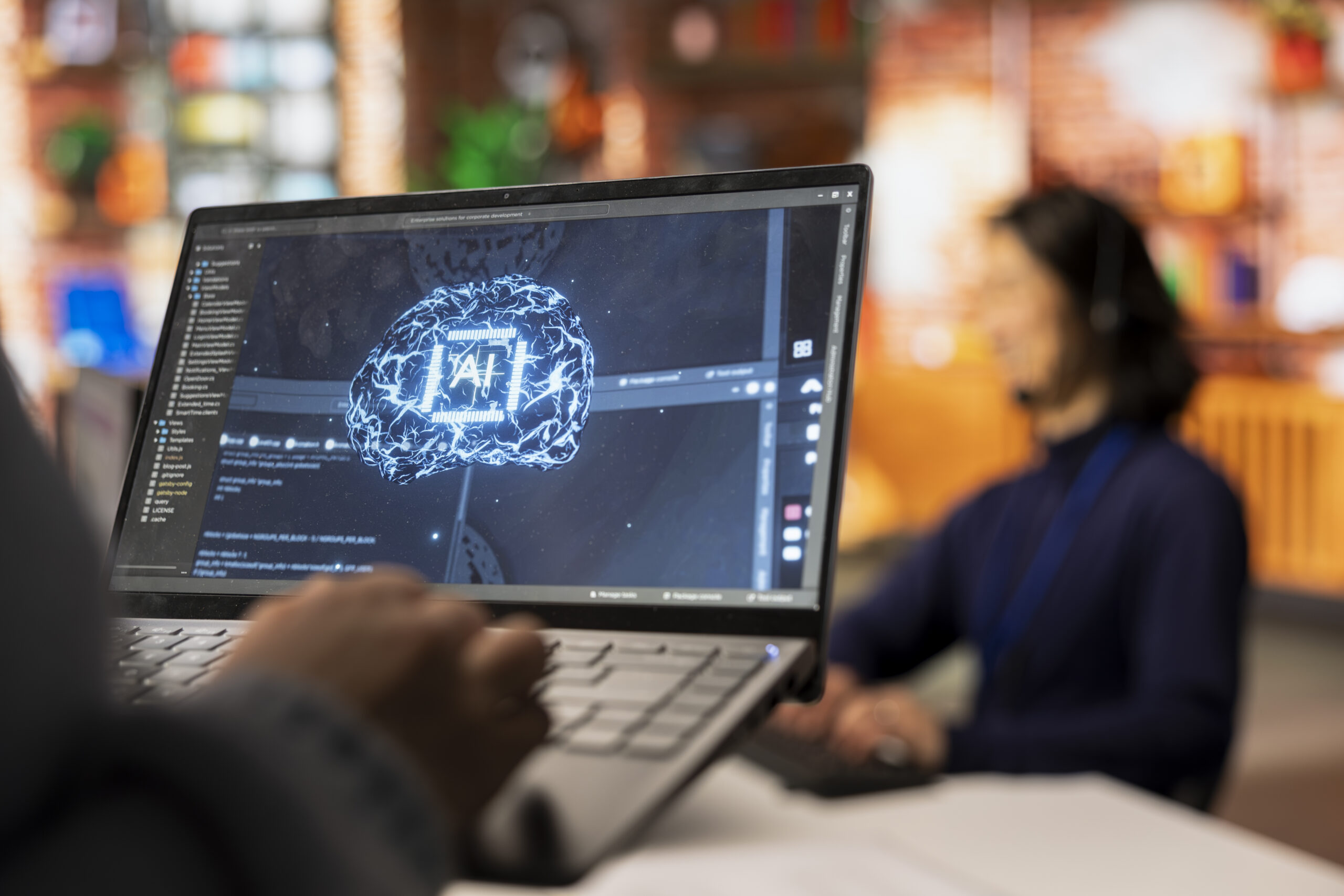The digital landscape is a river, not a rock. It’s in a state of constant, exhilarating flux. The websites that captivated us five years ago feel archaic today, and the sites we build now will be viewed through a similar lens in the near future. For business owners, entrepreneurs, and anyone with a digital presence, understanding the trajectory of web design isn’t just interesting—it’s critical for survival and growth.
So, what does the future hold? By 2026 and beyond, we will move beyond static pages and predictable layouts into an era of intelligent, immersive, and deeply personalized web experiences. Let’s dive into the key trends that will define the next chapter of the web.
1. AI Co-Pilots and Hyper-Personalization: The End of the “One-Size-Fits-All” Website
Artificial Intelligence is set to transition from a buzzword to an integral part of the web designer’s toolkit. We’re not talking about robots taking over jobs, but rather, AI acting as a creative co-pilot.
- Generative Design: Imagine briefing an AI on your brand values, target audience, and content. The AI then generates multiple unique design prototypes, color palettes, and font pairings in seconds. This doesn’t replace the designer but liberates them from the mundane, allowing focus on strategic and emotional aspects of the design. The best Web Design Company will leverage these tools to accelerate creativity, not stifle it.
- True 1:1 Personalization: Forget just recommending “products you might like.” The future website will dynamically reshape itself for each visitor. Using AI and machine learning, sites will adjust their layout, highlight specific content, and even modify calls-to-action based on a user’s location, device, past behavior, and even the time of day. A first-time visitor might see an introductory explainer video, while a returning customer is greeted with a dashboard of their recent activity. This level of tailoring requires sophisticated backend architecture, often built by a specialized Best Website Development Company with expertise in data integration.
2. The Immersive Web: AR, VR, and the Spatial Experience
The line between the physical and digital worlds is blurring. With the maturation of Augmented Reality (AR) and Virtual Reality (VR), the web is becoming a spatial experience.
- AR for E-commerce and Education: Imagine pointing your phone at your living room to see how a new sofa would look, or at a restaurant menu to see a 3D rendering of a dish. This “try before you buy” functionality, directly in the browser, will become standard. For industries like furniture, fashion, and tourism, this is a game-changer.
- VR for Virtual Showrooms and Events: Why browse a car dealership website when you can take a virtual test drive from your couch? High-end brands will create fully immersive VR showrooms, and virtual events will become more sophisticated, offering networking opportunities that feel almost tangible. Building these experiences is a complex task that often falls under cloud software development, as the computational power required is immense and scalable.
3. Voice-First and Conversational UI: Talking to the Internet
The proliferation of smart speakers and voice assistants has trained us to talk to our devices. The next evolution is voice-first navigation for websites.
- Beyond Typing: Users will increasingly expect to find information, navigate menus, and even make purchases using voice commands. This necessitates a fundamental shift in how we structure information—thinking in terms of conversation flows and natural language rather than menus and click paths.
- Accessibility as a Driver: Voice UI is a massive win for accessibility, making the web more usable for individuals with visual or motor impairments. A forward-thinking Web Design Company will bake voice navigation into its core principles, ensuring content is structured for both eyes and ears.
4. The Rise of Motion UI and Micro-Interactions: The Emotionally Intelligent Interface
Static visuals are no longer enough to capture and retain user attention. Subtle, purposeful animation—known as Motion UI—will become a primary language of digital communication.
- Guiding the User: Smooth animations can guide the user’s eye, provide feedback on actions (like a button changing state when clicked), and make page transitions feel seamless and intuitive.
- Building Brand Personality: A playful bounce, a sophisticated fade, or a energetic swipe—these micro-interactions inject personality into a digital product. They make the user feel connected to the brand on an emotional level, transforming a utilitarian task into an engaging experience.
5. Advanced No-Code/Low-Code Platforms: Empowering Everyone
The democratization of web design will continue at a rapid pace. No-code and low-code platforms like Webflow, Bubble, and Framer are becoming incredibly powerful, enabling non-technical users to build sophisticated, professional-looking websites.
- The Designer’s New Role: This doesn’t make professional developers obsolete. Instead, it shifts their role. The expert Best Website Development Company will focus on complex custom functionality, systems integration, and optimizing the performance and security of these platforms. They become the architects and engineers, while the tools empower a wider range of creators to build the structure.
6. Sustainability and Ethical Design: Building a Greener, Kinder Web
As awareness of climate change and digital ethics grows, users are becoming more conscious of the brands they support online.
- Green Web Design: This involves creating websites that consume less energy. Strategies include optimizing images and videos, using efficient code, choosing green web hosting providers, and simplifying designs to reduce data transfer. A sustainable website is not just good for the planet; it’s often faster and provides a better user experience.
- Ethical and Inclusive Design: Dark patterns—deceptive UI tricks that manipulate users—will become a major brand liability. The future belongs to designs that are honest, transparent, and accessible to everyone, regardless of ability. This means clear data usage policies, easy-to-understand consent forms, and designs that adhere to WCAG (Web Content Accessibility Guidelines) from the ground up.
7. The Backbone of It All: Cloud-Native Architectures
None of these futuristic experiences are possible without a robust, scalable, and secure foundation. This is where cloud software development becomes the unsung hero.
- Scalability and Performance: Whether it’s handling a sudden viral traffic spike or processing complex AI personalization algorithms in real-time, cloud infrastructure provides the elastic resources needed. A site built on a rigid, old-school server will crumble under the demands of the modern web.
- Security and Integration: Cloud platforms offer advanced security features and make it easier to integrate with a vast ecosystem of third-party services (APIs)—from payment gateways and CRM systems to AI models and analytics tools. Choosing a development partner skilled in cloud software development is no longer a luxury; it’s a necessity for any business with serious digital ambitions.
Partnering for the Future: Cserve Technologies | India
Navigating this complex and exciting future requires a partner who is not just a developer, but a strategist and innovator. This is where Cserve Technologies | India stands out.
As a premier Web Design Company and a recognized Best Website Development Company in India, Cserve Technologies embodies the fusion of creative design and cutting-edge technical expertise. They understand that a modern website is a dynamic business application, not just a digital brochure.
Their proficiency extends beyond beautiful front-ends into robust cloud software development, ensuring that the experiences they build are scalable, secure, and performant. They are equipped to help businesses implement AI-driven personalization, explore immersive AR/VR concepts, and build on a cloud-native foundation that can grow with their ambitions.
By partnering with a forward-thinking agency like Cserve Technologies, you aren’t just building a website for today; you’re future-proofing your digital presence for 2026 and beyond.
Conclusion
The future of web design is a thrilling convergence of art and science. It’s intelligent, responsive, and deeply human-centered. The websites that will lead the pack in 2026 and beyond will be those that offer seamless, personalized, and meaningful experiences. They will be built on a foundation of robust cloud software development, crafted with ethical and sustainable principles, and designed to converse with users through both voice and motion.
Staying ahead of this curve requires vision and the right partnership. By embracing these trends and aligning with an expert partner like Cserve Technologies | India, businesses can ensure their digital presence is not just current, but pioneering, ready to captivate and engage the audiences of tomorrow, today.
Frequently Asked Questions (FAQs)
- How important will website speed be in the future?
It will be more critical than ever. With advancements in core web vitals as a Google ranking factor and user expectations for instant loading, speed is non-negotiable. Future technologies like AI and immersive media will make efficient, performance-optimized coding and hosting even more vital.
- Are no-code platforms like Webflow going to replace web developers?
No, their role will evolve. No-code platforms empower marketers and designers to build more on their own. However, developers will be needed for complex custom functionality, systems integration, API connections, and ensuring the overall security, performance, and scalability of the final product.
- What is the single most important skill for a web designer in the future?
Adaptability and a systems-thinking mindset. The future designer needs to understand not just aesthetics, but also UX principles, basic psychology, the capabilities of AI, and the technical constraints of development. They are problem-solvers who design for a dynamic, interactive experience.
- How can I make my existing website more future-ready?
Start with the fundamentals: ensure it is fully responsive, blazing fast, and accessible (WCAG compliant). Then, focus on content strategy and personalization. Begin collecting user data ethically and explore ways to segment your audience. Finally, audit your tech stack and consider a move to a cloud-based, headless CMS for greater flexibility.
- Is investing in AR/VR worth it for my business right now?
It depends on your industry and audience. For B2C companies in retail, real estate, or tourism, a simple AR feature (like a product viewer) can be a powerful differentiator. For most B2B companies, the ROI might not be immediate. The key is to start with small, experimental projects to learn and build expertise, rather than making a massive investment upfront.










